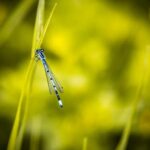Mailbox gardening ideas are a creative way to enhance the curb appeal of your home and showcase your passion for gardening in a small space. This concept involves incorporating plants around your mailbox to create a charming and inviting display that can brighten up your front yard. Not only does it beautify the landscape, but it also provides an opportunity to express your personality through plant selection and design.
By implementing mailbox gardening, you can enjoy a range of benefits beyond just aesthetic appeal. These miniature gardens can help attract pollinators like bees and butterflies, add privacy to your outdoor space, and even serve as a natural boundary marker for your property. Additionally, caring for these small plantings can be a manageable task that is perfect for beginners or those with limited time and space for gardening.
Whether you have a green thumb or are new to gardening, exploring mailbox gardening ideas can spark creativity and inspiration in designing your outdoor space. From selecting the right plants to creating DIY projects and maintaining your garden throughout the seasons, there are endless possibilities to make your mailbox area an eye-catching focal point that reflects your personal style and love for nature.
Selecting the Right Plants
Mailbox gardening can be a creative and visually appealing way to enhance the curb appeal of your home. When selecting plants for your mailbox garden, it is essential to choose the right flowers, shrubs, and vines that will thrive in that specific environment.
Consider factors such as sunlight exposure, soil quality, and the size of your mailbox when determining what plants to incorporate into your design. Here are some tips on choosing the best plants for your mailbox garden:
- Choose flowers that are low-maintenance and will bloom throughout the season, such as petunias, marigolds, or begonias.
- Select shrubs or small bushes that will add depth and texture to your mailbox garden, like boxwood, lavender, or dwarf holly.
- Incorporate climbing vines such as clematis, trumpet vine, or morning glory to add height and interest to your mailbox display.
By carefully selecting a variety of plants that complement each other in color, height, and blooming times, you can create a beautiful and thriving mailbox garden. Consider mixing different types of plants to create a dynamic and eye-catching display that will attract attention from passersby.
Remember to consider the maintenance requirements of the plants you choose for your mailbox garden. Ensure they are suitable for the amount of care you are willing to provide regularly. With proper planning and plant selection, you can create a stunning mailbox garden that will bring joy to both yourself and those who see it passing by. Experiment with different combinations until you find the perfect mix of flowers, shrubs, and vines that suits your style and preferences.
Design Inspiration
Mailbox gardening is a charming way to add curb appeal to your home while showcasing your gardening skills. When it comes to arranging plants around a mailbox, there are countless creative ideas to make the display visually appealing. One popular option is to create a cascading effect by combining trailing plants with upright varieties. This not only creates a dynamic look but also allows for different textures and colors to be incorporated into the design.
In addition, consider mixing different types of flowers and foliage to add depth and interest to your mailbox garden. For example, pairing delicate, airy blooms with bold, broad leaves can create a striking contrast that draws the eye. You can also play with varying heights by using tall plants in the back and shorter ones in the front to give your mailbox garden a sense of balance and dimension.
Furthermore, don’t hesitate to experiment with different shapes and sizes of planters or containers for your mailbox garden. From classic terracotta pots to repurposed wooden crates or hanging baskets, there are plenty of options to personalize your display. Mixing and matching container styles can add an eclectic touch to your design while allowing you to showcase your unique style and creativity when it comes to mailbox gardening ideas.
| Benefit | Tip |
|---|---|
| Enhances curb appeal | Create a cascading effect with trailing and upright plants |
| Adds visual interest | Mix different flowers and foliage for depth |
| Personalization | Experiment with various planters for a unique look |
DIY Mailbox Garden Projects
When it comes to creating a beautiful and personalized mailbox garden, DIY projects can add a special touch to your outdoor space. Whether you are looking to build a planter box around your mailbox or add decorative elements to enhance its appearance, there are plenty of creative ideas to choose from. Here are some step-by-step instructions for creating your own mailbox planters and decorations.
Building a Mailbox Planter Box
One popular DIY project for mailbox gardening is building a planter box around your mailbox. To start, gather the necessary materials such as wood planks, screws, nails, and a saw. Measure the dimensions of your mailbox and design a planter box that will fit snugly around it.
Cut the wood planks to size and assemble them into a box shape using screws or nails. Make sure to leave an opening for the mailbox door and secure the planter box in place with stakes or brackets.
Decorating Your Mailbox With Flower Pots
Another fun DIY project is decorating your mailbox with flower pots. Choose a variety of colorful pots in different sizes and styles to create an eye-catching display. Attach them securely to the mailbox post using hooks or brackets. Fill the pots with soil and plant your favorite flowers, herbs, or succulents. You can also mix and match different plants for added visual interest.
Adding Decorative Accents
In addition to planters, consider adding decorative accents to personalize your mailbox garden further. You can hang wind chimes, bird feeders, or solar lights to make your mailbox stand out. Get creative with paint or stencils to customize the look of your mailbox itself. Adding small garden ornaments or flags can also enhance the overall appeal of your mini garden oasis by the roadside.
Maintenance Tips
Watering
One of the essential aspects of caring for your mailbox garden is ensuring proper watering. Depending on the types of plants you have chosen, you may need to water them regularly to keep them healthy and thriving. During hot summer months, it might be necessary to water daily, while in cooler seasons, you can adjust your watering schedule accordingly. Be sure to check the soil moisture levels frequently and water deeply to encourage deep root growth.
Fertilizing
To keep your plants in optimal health and promote abundant blooms, fertilizing your mailbox garden is crucial. Consider using a balanced fertilizer specifically designed for flowers or shrubs to provide them with the necessary nutrients they need to thrive. You can fertilize your plants in early spring when they are actively growing and again in mid-summer to support continuous blooming. Follow the instructions on the fertilizer package for proper application rates.
Pruning
Regular pruning is essential for maintaining the shape and health of the plants in your mailbox garden. Remove any dead or damaged branches, spent flowers, or overgrown foliage to encourage new growth and improve air circulation around the plant. Use sharp pruners or shears to make clean cuts at a 45-degree angle.
Different plants may require specific pruning techniques, so it’s essential to research each plant species’ pruning needs before starting. Pruning also helps control the size of your mailbox garden and prevent overcrowding as plants mature.
Seasonal Planting Ideas
When it comes to maintaining a vibrant and eye-catching mailbox garden, selecting the right plants is crucial. To ensure that your mailbox garden remains blooming year-round, consider incorporating a variety of plant combinations that thrive in different seasons. By carefully planning your planting choices, you can enjoy a continuous display of colors and textures throughout the year.
To keep your mailbox garden looking fresh and beautiful in every season, here are some suggestions for plant combinations:
- Spring: For a burst of color after the winter months, consider planting bulbs like tulips or daffodils around your mailbox. Pair them with early blooming perennials like pansies or primroses for added interest.
- Summer: Opt for heat-loving annuals such as marigolds, petunias, or zinnias to add a pop of color during the hot summer months. Mix in some flowering shrubs like hydrangeas or roses for a longer-lasting impact.
- Fall: As the temperature starts to cool down, introduce fall-blooming plants like asters, mums, or ornamental kale to your mailbox garden. Add in ornamental grasses or late-blooming perennials for a dynamic autumn look.
By carefully selecting plants that bloom at different times of the year, you can create a mailbox garden that offers visual interest and beauty throughout all four seasons. Don’t be afraid to experiment with various plant combinations to find the perfect mix that suits your taste and climate. With strategic planning and thoughtful choices, you can transform your mailbox into a year-round botanical showcase using these seasonal planting ideas.
Mailbox Garden Themes
Mailbox gardening offers a unique opportunity to showcase your personal style and creativity right at the front of your home. One exciting aspect of mailbox gardening is exploring different themes to create a cohesive and visually striking design. Whether you prefer the charm of a cottage garden, the sleek look of modern design, or the low-maintenance appeal of succulents, there are endless possibilities to express your individuality through your mailbox garden.
For those who appreciate a quaint and nostalgic feel, a cottage garden theme for your mailbox area can be the perfect choice. Opt for classic blooms like roses, lavender, and daisies to create a whimsical and welcoming atmosphere. Consider adding a mix of annuals and perennials in pastel hues to enhance the romantic cottage garden look. Pair these flowers with vintage-inspired planters or rustic decor elements to complete the charming aesthetic.
On the other end of the spectrum, a modern-themed mailbox garden offers clean lines, minimalistic features, and bold accents. Select architectural plants such as ornamental grasses, succulents, or sculptural shrubs to achieve a contemporary look around your mailbox. Incorporate geometric planters in metal or concrete finishes for a sleek touch. Embrace simplicity with monochromatic color schemes or opt for high-contrast combinations like black and white for a striking visual impact.
In contrast, if you prefer an easy-care and drought-tolerant approach to gardening, consider creating a succulent-inspired design around your mailbox. Succulents come in various shapes, sizes, and colors, making them versatile choices for adding texture and interest to your garden display. Combine different types of succulents such as echeverias, sedums, or aeoniums in an assortment of planter styles like terracotta pots or driftwood containers for an eye-catching desert-inspired oasis right by your mailbox.
| Theme | Plant Suggestions |
|---|---|
| Cottage Garden | Roses, Lavender, Daisies |
| Modern | Ornamental Grasses, Succulents |
| Succulent-Inspired | Echeverias, Sedums, Aeoniums |
Tips for Attracting Wildlife
Creating a mailbox garden not only enhances the curb appeal of your home but also provides an opportunity to attract and support local wildlife. By selecting the right plants and incorporating certain features, you can transform your mailbox garden into a haven for pollinators, birds, and butterflies. Incorporating native plants is key when it comes to attracting wildlife to your mailbox garden.
Native plants are adapted to the local environment and therefore provide food and shelter for native insects, birds, and other animals. Additionally, consider planting a variety of flowers with different bloom times to ensure a continuous food source for pollinators throughout the seasons.
Adding water features such as a small birdbath or shallow dish filled with water can also help draw in birds and butterflies to your mailbox garden. Providing a water source is essential for wildlife, especially during hot summer days when natural sources may be scarce.
You can further enhance your mailbox garden’s appeal by including birdhouses or nesting boxes for birds looking to make a home nearby. These features not only provide shelter but also contribute to the overall biodiversity of your garden.
In conclusion, designing a mailbox garden that attracts wildlife is both fulfilling and beneficial for the ecosystem around your home. By following these tips and incorporating specific plant selections and features, you can create a vibrant oasis that supports pollinators, birds, butterflies, and other beneficial species.
With some creativity and thoughtful planning, your mailbox garden can become a thriving ecosystem that brings joy to both you and the wildlife that visit it. Explore different ideas, themes, and plant combinations to make your mailbox gardening experience truly unique.

Welcome to my gardening blog! I am passionate about plants and enjoy sharing my knowledge and experiences with others. In this blog, I will write about everything related to gardening, from tips on how to get started to updates on my own garden projects.





